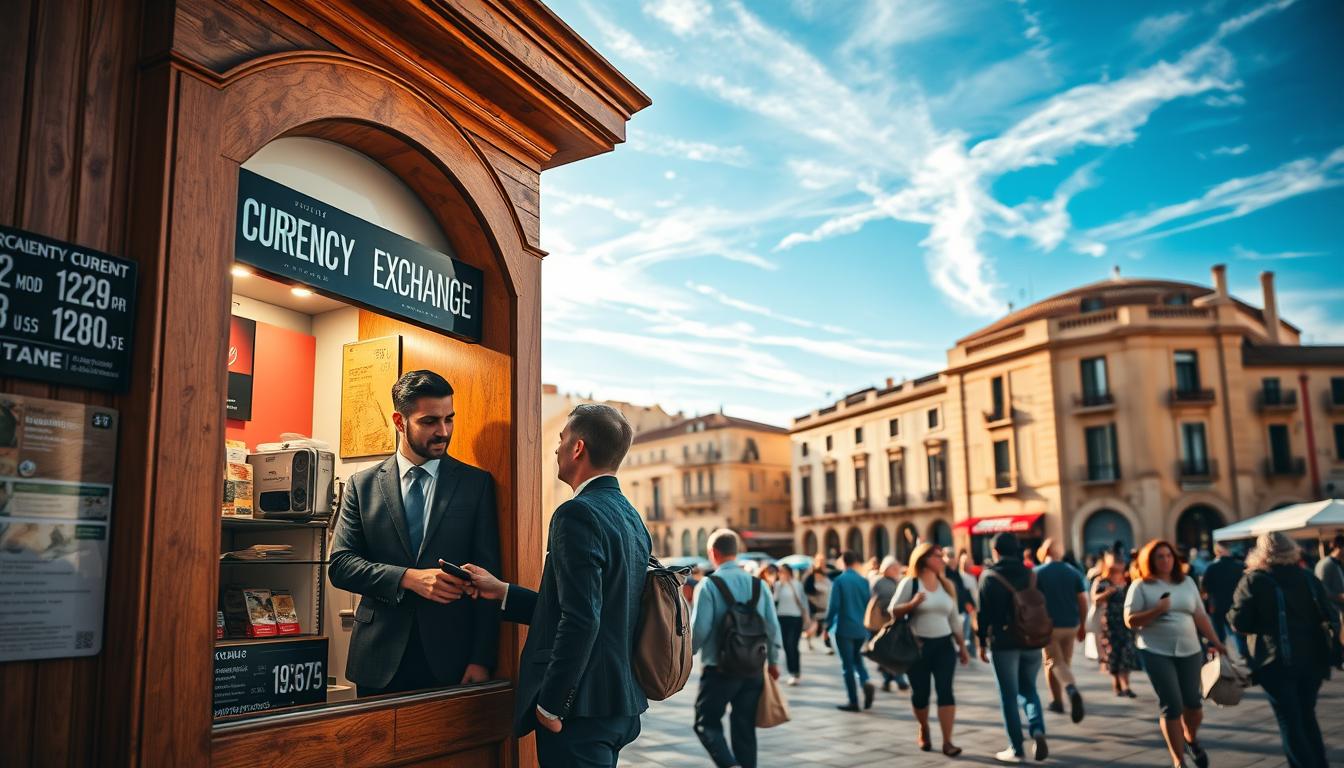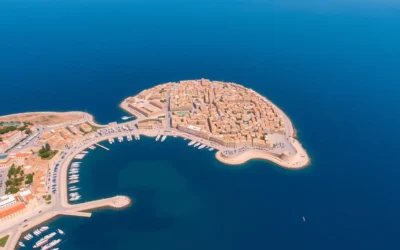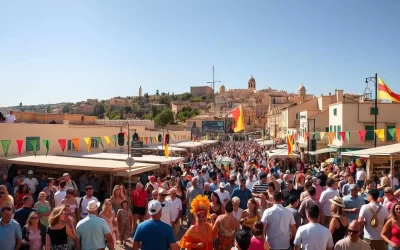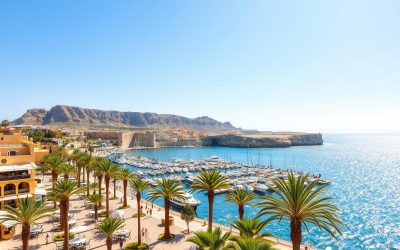✓ Accommodations✓ Flights✓ Rental Cars✓ Tours & Activities
When planning your next trip, understanding the financial landscape can save you time and money. Many travelers lose over $100 in hidden fees when exchanging currency abroad. This happens because of high markups and unfamiliar payment methods.
In this guide, you’ll learn how to navigate currency exchange and payment options effectively. The official currency is the Euro, and knowing the mid-market rate is key to avoiding extra costs. Whether you’re using cash, cards, or digital wallets, being prepared ensures a smooth experience.
From exchanging USD to EUR to using travel-friendly cards like Wise, this guide covers it all. Stay informed and make the most of your trip without unnecessary expenses.
Introduction: Navigating Currency and Payment Systems in Malta
Getting familiar with the financial systems of your destination can make your journey smoother and more cost-effective. Whether you’re exchanging money or using a card, understanding the basics ensures you’re prepared for any situation.
Overview of the Financial Landscape
The financial landscape of your destination plays a big role in your travel plans. Knowing the local currency and how it works can save you from unnecessary fees. For example, the exchange rate can vary widely depending on where you convert your money.
Using a reliable card or digital wallet can also simplify payments. Many places accept cards, but having some cash on hand is always a good idea. Being aware of these details helps you avoid surprises during your trip.
Why Preparing in Advance Matters
Preparing your finances before your trip is essential. Researching the best places to exchange money can help you get a better rate. Avoiding last-minute exchanges at airports or tourist spots can save you money.
Additionally, understanding the exchange rate trends can help you decide when to convert your money. Early preparation ensures you’re ready to handle payments smoothly, whether you’re using cash, cards, or digital options.
Understanding Malta’s Currency: The Euro Explained
The Euro is the official currency, and knowing how to use it saves you money. As part of the European Union, this country adopted the EUR in 2008, replacing the Maltese Lira. This makes transactions straightforward for visitors from other Eurozone countries.
When traveling, having some cash on hand is always a good idea. You can withdraw EUR from local ATMs, which are widely available. Avoid exchanging money at airports, as rates are often unfavorable. Instead, use reputable banks or exchange providers in the city.
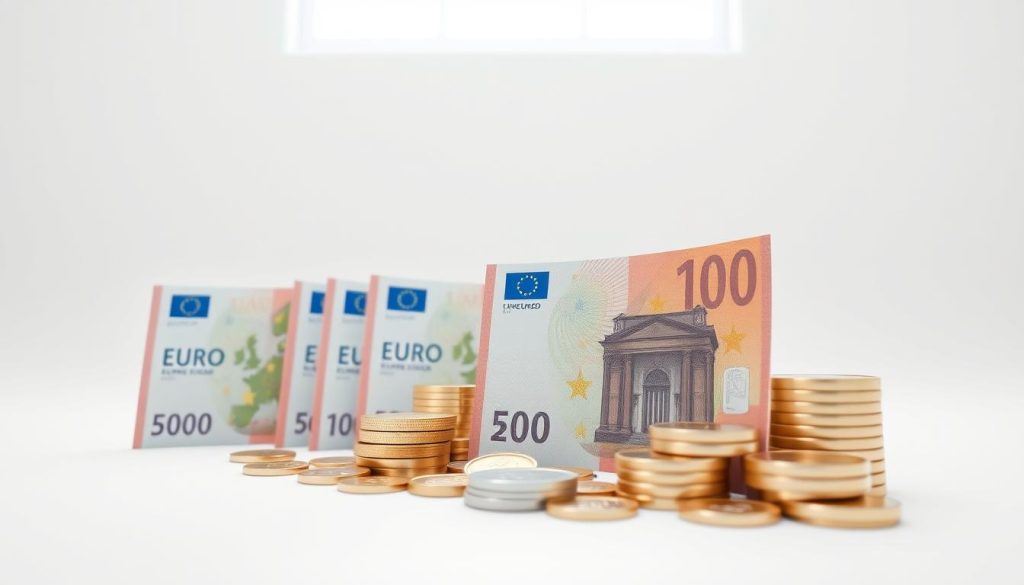
To save on fees, check with your home bank about international withdrawal charges. Many ATMs in Malta are part of global networks, offering reduced fees for travelers. Additionally, digital tools can help you track live exchange rates, ensuring you get the best deal when converting your money.
By preparing in advance, you can avoid unnecessary costs and enjoy a hassle-free experience. Whether you’re using cash, cards, or digital wallets, understanding the EUR system ensures smooth transactions throughout your trip.
Preparing to Exchange Your Money: Tips Before Your Trip
Smart money management before your trip can save you from unnecessary expenses. Exchanging your currency wisely ensures you get the best value for your money. By planning ahead, you can avoid hidden fees and markups that often catch travelers off guard.
Exchanging USD to EUR Ahead of Time
One of the best ways to save on fees is to exchange your USD to EUR before you leave. Local banks or reputable exchange services often offer better rates than airport providers. This simple step can save you a significant amount of money.
Using online tools to track the mid-market rate helps you identify the best time to convert your money. Avoid last-minute exchanges, as they often come with higher markups. Being prepared ensures you get the most out of your budget.
Comparing Exchange Rates and Avoiding Airport Markups
Airport exchange providers are convenient but usually charge higher fees. Comparing rates from different services can help you find the best deal. Look for providers with transparent fee structures to avoid surprises.
Here’s a quick comparison of common exchange options:
| Provider | Exchange Rate | Fees |
|---|---|---|
| Local Banks | Mid-market rate | Low or no fees |
| Airport Kiosks | Marked up by 5-10% | High fees |
| Online Services | Close to mid-market rate | Minimal fees |
Another common pitfall is dynamic currency conversion. This occurs when merchants offer to charge you in your home currency instead of EUR. While it may seem convenient, the exchange rate is often unfavorable. Always opt to pay in the local currency to save on conversion costs.
By understanding fee structures and comparing rates, you can make informed decisions. This ensures your travel budget stretches further, leaving you with more to spend on experiences.
Exploring Payment Methods in Malta
Choosing the right payment methods can make your trip smoother and more cost-effective. Whether you prefer cash, cards, or digital wallets, understanding your options ensures you’re prepared for any situation. Let’s explore the variety of payment methods available and when to use each.
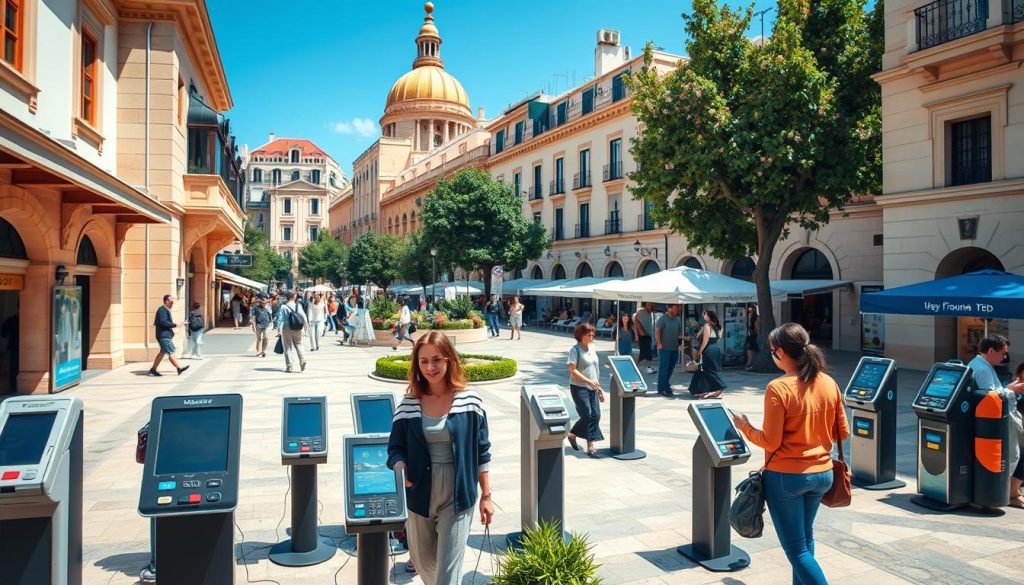
Cash, Cards, and Digital Options
When it comes to managing your money, you have several choices. Cash is widely accepted, especially for small purchases like snacks or souvenirs. However, carrying large amounts of cash can be risky.
Cards, including debit card and credit options, are convenient for larger transactions. Most establishments accept major brands like Visa and Mastercard. Digital wallets, such as Apple Pay or Google Pay, are also gaining popularity for their ease and security.
When to Use Each Method
For small purchases, cash is often the best choice. It’s quick and avoids potential card fees. For larger expenses, like hotel bookings or dining, using a debit card or credit card is more practical.
Digital wallets are ideal for contactless payments, especially in busy areas. They’re secure and reduce the need to carry physical cards or cash. Here’s a quick comparison to help you decide:
| Method | Best For | Pros | Cons |
|---|---|---|---|
| Cash | Small purchases | Widely accepted | Risk of loss or theft |
| Debit/Credit Cards | Larger transactions | Convenient and secure | Potential fees |
| Digital Wallets | Contactless payments | Fast and secure | Limited acceptance in some areas |
Setting up a travel money solution in advance can save you from high fees. For example, using a multi-currency card like Wise allows you to manage your exchange rates efficiently. This ensures you’re always prepared, no matter the situation.
By understanding the pros and cons of each method, you can make informed decisions. This helps you manage your money wisely and enjoy a hassle-free experience.
Leveraging Travel Debit Cards and ATMs in Malta
Travel debit cards and ATMs offer convenience and cost savings for international trips. By using the right tools, you can avoid unnecessary fees and manage your finances efficiently. Whether you’re withdrawing cash or making purchases, understanding your options ensures a smooth experience.
Benefits of Using a Multi-Currency Travel Card
Multi-currency travel cards, like the Wise card, are designed for international travelers. They allow you to hold and spend in multiple currencies without high conversion fees. For example, Wise uses the mid-market rate, saving users up to 88% on currency exchange costs.
These cards are also convenient for atm withdrawals. You can withdraw cash in the local currency at competitive rates. Unlike traditional credit cards, which often charge foreign transaction fees, multi-currency cards minimize extra costs.
Here’s why they’re advantageous:
- Low conversion fees compared to banks.
- Secure and easy to use for purchases and withdrawals.
- Ability to manage multiple currencies in one account.
Using ATMs for Secure Cash Withdrawals
ATMs are a reliable way to access cash while traveling. They’re widely available and offer secure transactions. When using a travel debit card, you can withdraw money with minimal fees. For instance, Starling cardholders enjoy no added atm withdrawal fees.
To avoid extra charges, look for ATMs that are part of global networks. These often have lower fees compared to standalone machines. Always opt to withdraw in the local currency to avoid unfavorable exchange rates.
Comparing Fees and Rates
Travel cards and traditional credit cards differ in fees and exchange rates. While credit cards may charge 1-2% in foreign transaction fees, multi-currency cards like Wise offer more competitive rates. Here’s a quick comparison:
| Provider | Conversion Fee | ATM Withdrawal Fee |
|---|---|---|
| Traditional Credit Card | 1-2% | $5+ |
| Wise Multi-Currency Card | Up to 88% savings | Low or no fee |
Tips to Minimize Charges
To save on fees, follow these tips:
- Use multi-currency cards for purchases and withdrawals.
- Avoid dynamic currency conversion at ATMs or merchants.
- Withdraw larger amounts less frequently to reduce ATM fees.
By leveraging travel debit cards and ATMs, you can manage your finances efficiently. These tools not only save you money but also provide peace of mind during your trip.
Strategies for Securing the Best Exchange Rates in Malta
Maximizing your travel budget starts with securing the best exchange rates. Knowing how to navigate the currency exchange process can save you money and make your trip more enjoyable. By understanding key strategies, you can avoid unnecessary fees and get the most out of your money malta.

Using Mid-Market Rates to Your Advantage
The mid-market rate is the real exchange rate banks use when trading currencies. However, most providers add a markup, which means you don’t always get this rate. To secure the best deal, compare rates from online tools and local providers in the city.
Here’s how to make mid-market rates work for you:
- Use rate comparison apps to track live exchange rates.
- Avoid airport kiosks, as they often charge higher fees.
- Check with local banks or reputable exchange services for better rates.
Comparing Rates Online and Locally
Online platforms like Wise or Revolut offer competitive rates close to the mid-market rate. These tools are convenient and allow you to monitor fluctuations in real time. For in-person exchanges, explore options in the city center, where rates are often better than at tourist spots.
Here’s a quick comparison of exchange options:
| Provider | Exchange Rate | Fees |
|---|---|---|
| Online Platforms | Close to mid-market rate | Minimal fees |
| Local Banks | Mid-market rate | Low or no fees |
| Airport Kiosks | Marked up by 5-10% | High fees |
Insider Tips for Better Exchange Options
In the city, look for exchange providers that specialize in currency malta. These businesses often offer better rates than general services. Additionally, consider using a multi-currency card to avoid repeated exchange fees. By planning ahead, you can ensure your money malta goes further.
With these strategies, you can secure the best rates and enjoy a stress-free trip. Whether you’re using cash, cards, or digital wallets, being informed makes all the difference.
Avoiding Common Pitfalls in Currency Exchange and Payments
Navigating currency exchange and payments abroad can be tricky, but avoiding common mistakes saves you money. Many travelers lose funds due to hidden fees, unfavorable rates, or poor options. By understanding these pitfalls, you can protect your budget and enjoy a stress-free trip.
Steering Clear of Dynamic Currency Conversion
One of the most common traps is dynamic currency conversion (DCC). This occurs when merchants offer to charge you in your home currency instead of the local one. While it may seem convenient, the exchange rate is often marked up significantly. For example, paying in USD instead of EUR can cost you an extra 5-10%.
Always opt to pay in the local currency to avoid these fees. When using a card, ensure the terminal is set to charge in EUR. If you’re unsure, ask the merchant directly. This simple step can save you a lot of time and money.
“Dynamic currency conversion is a hidden fee that many travelers overlook. Always choose the local currency to avoid unnecessary charges.”
Timing and Destination Choices Matter
Your destination and the time of your exchange can impact costs. Airports, for instance, are notorious for offering poor rates. Exchanging money at an airport kiosk can cost you up to 10% more than at a local bank or online service.
Instead, plan ahead and exchange your money in the city center. Use online tools to monitor real-time rates and choose the best option. This ensures you get the most value for your money.
Monitoring Real-Time Exchange Rates
Exchange rates fluctuate constantly, so staying informed is key. Use apps or websites to track live rates and identify the best time to convert your money. This helps you avoid costly mistakes and maximize your budget.
Here’s a quick comparison of common exchange options:
| Provider | Exchange Rate | Fees |
|---|---|---|
| Local Banks | Mid-market rate | Low or no fees |
| Airport Kiosks | Marked up by 5-10% | High fees |
| Online Services | Close to mid-market rate | Minimal fees |
By avoiding dynamic currency conversion, choosing the right destination for exchanges, and monitoring rates, you can save significantly. These strategies ensure your travel budget goes further, leaving you with more to spend on experiences.
Malta: Ultimate Travelers Guide to Currencies & Payments: Key Insights
Managing your finances effectively while traveling ensures a stress-free experience. Whether you’re staying at a hotel or exploring the place, being prepared with the right tools and knowledge makes all the difference.
Here’s a quick recap of essential tips for handling currency and payments:
- Use a multi-currency card like Wise to save on conversion fees.
- Withdraw cash from ATMs in the city center for better rates.
- Always opt to pay in the local currency to avoid dynamic currency conversion fees.
Understanding the pros and cons of each payment method helps you make informed decisions. For example, cash is great for small purchases, while cards are ideal for larger transactions. Digital wallets offer convenience for contactless payments.
Here’s a comparison of payment options:
| Method | Best For | Pros | Cons |
|---|---|---|---|
| Cash | Small purchases | Widely accepted | Risk of loss or theft |
| Debit/Credit Cards | Larger transactions | Convenient and secure | Potential fees |
| Digital Wallets | Contactless payments | Fast and secure | Limited acceptance in some areas |
Proper preparation ensures a smoother experience, whether you’re at home or on your trip malta. By following these tips, you can focus on enjoying your stay without worrying about finances.
Remember, being informed and prepared is the key to a hassle-free journey. Whether you’re dining out, shopping, or booking a hotel, smart money management enhances your travel experience.
Sending Money and Managing Online Payments in Malta
Managing your money while traveling doesn’t have to be complicated with the right tools and knowledge. Whether you’re sending funds internationally or paying at a local restaurant, understanding payment networks and online security ensures smooth transactions. This section covers everything you need to know to handle your finances efficiently.
Understanding Local Payment Networks
When sending money internationally, using established networks like SEPA, SWIFT, and TARGET2 can save you time and reduce costs. SEPA is ideal for Eurozone transfers, offering low fees and fast processing times, often within one business day. SWIFT, on the other hand, is a global network that supports transfers to over 170 countries, making it versatile but sometimes slower.
For example, if you’re paying for a meal at a restaurant, SEPA transfers are often the best choice due to their speed and affordability. Comparing fees and transfer speeds is essential to avoid unnecessary expenses. Here’s a quick overview:
- SEPA: Low fees, transfers within one day.
- SWIFT: Global reach, but higher fees and longer processing times.
- TARGET2: Ideal for large transactions, often used by businesses.
Securing Your Transactions Online
Online payments are convenient, but security is crucial. Always use trusted platforms with encryption and two-factor authentication. For instance, when paying at a restaurant or booking a hotel, ensure the website has a secure connection (look for “https” in the URL).
Here are some tips to keep your transactions safe:
- Avoid public Wi-Fi for financial transactions.
- Use strong, unique passwords for payment accounts.
- Monitor your accounts regularly for unauthorized activity.
By following these steps, you can minimize risks and focus on enjoying your trip without worrying about your finances.
Whether you’re sending money or paying for daily expenses, understanding payment networks and security measures ensures a hassle-free experience. From restaurants to hotels, being prepared helps you manage your costs effectively and enjoy your travels to the fullest.
Enhancing Your Travel Experience Through Smart Payment Tips
Smart payment strategies can transform your travel experience, making it smoother and more enjoyable. By preparing ahead and using the right tools, you can avoid disruptions and focus on exploring. Here’s how to make the most of your financial planning while on the go.
Keeping Backup Payment Methods Ready
One of the best ways to ensure a hassle-free trip is to have multiple payment options. Relying solely on cash or a single card can lead to problems if something goes wrong. For example, if your card gets blocked or lost, having a backup service like a digital wallet or a second card can save the day.
Here’s a quick checklist for backup payments:
- Carry a mix of cash, cards, and digital wallets.
- Use a multi-currency card like Wise for flexibility.
- Keep a small amount of emergency cash in a separate place.
Managing Financial Transactions Offline and Online
Whether you’re paying at a local shop or booking a tour online, managing your transactions wisely is key. For offline payments, cash is often the best way to handle small purchases. For larger expenses, using a card or digital wallet is more convenient and secure.
When it comes to online payments, make sure you use trusted platforms with encryption. Avoid public Wi-Fi for financial transactions to protect your data. Monitoring your accounts regularly is also a good idea to catch any unauthorized activity early.

Using Apps and Tools to Monitor Rates and Fees
Staying informed about exchange rates and fees can save you money. Apps like Wise or Revolut allow you to track live rates and convert currencies at the mid-market rate. This is the best way to avoid hidden markups and get the most value for your money.
Here are some tips for using financial tools:
- Set up rate alerts to know when to exchange money.
- Compare fees across different services to find the best deal.
- Use budgeting apps to track your spending in real time.
Smart Planning with a Variety of Services
Diversifying your payment methods and tools ensures you’re prepared for any situation. For instance, combining a multi-currency card with a digital wallet gives you flexibility and security. This way, you can handle payments smoothly, whether you’re shopping, dining, or booking activities.
Here’s a quick comparison of payment options:
| Method | Best For | Pros | Cons |
|---|---|---|---|
| Cash | Small purchases | Widely accepted | Risk of loss or theft |
| Cards | Larger transactions | Convenient and secure | Potential fees |
| Digital Wallets | Contactless payments | Fast and secure | Limited acceptance in some areas |
By following these tips, you can enhance your travel experience and manage your finances with confidence. Smart planning and the right tools make all the difference, ensuring you enjoy every moment of your journey.
Conclusion
Exploring a new country becomes seamless when you’re well-prepared with the right financial tools. This guide has highlighted essential strategies to help you navigate the local payment methods and currency practices. Understanding the euro and planning ahead for exchange rates ensures you get the best value for your money.
From using multi-currency cards to avoiding dynamic currency conversion, these tips set you up for success. Whether you’re a seasoned tourist or a first-time visitor, being informed enhances your experience. Carrying a mix of cash and cards, along with monitoring exchange rates, keeps your finances secure and flexible.
By following these strategies, you can explore the world confidently, knowing you’re making smart financial decisions. A well-researched approach not only saves you money but also lets you focus on enjoying your journey. Prepare wisely, and your trip will be as smooth as it is memorable.
The above is subject to change.
Check back often to TRAVEL.COM for the latest travel tips and deals.
